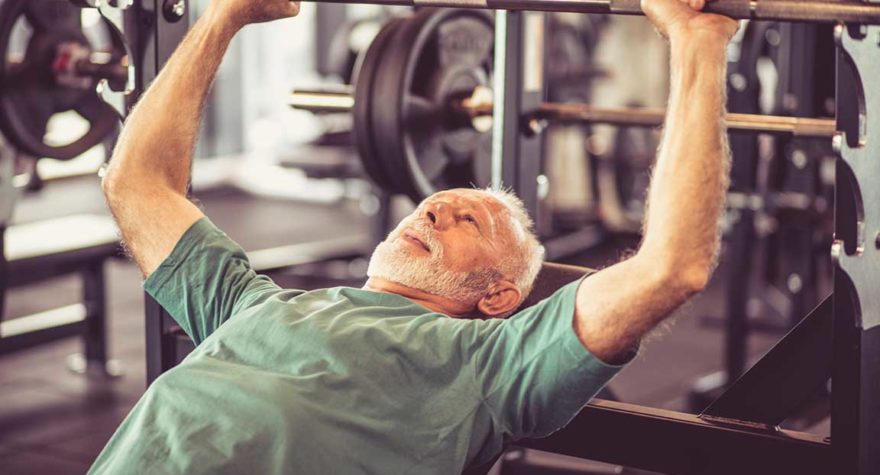
One of the ways to maintain one’s youth is through exercise. This may include cardiovascular activities, such as running, swimming, walking, and running, and weight training.
In particular, lifting weights has been proven to provide a myriad of benefits for the older generation. From improving muscle strength and balance to reducing aging signs at the cellular degree, weight training can help make you look and feel youthful again.
It’s no secret that pumping iron when you’re over 50 holds an entirely new set of challenges that weren’t there when you were younger. You could be dealing with hip, knee, back, or other joint pain types that may worsen when you perform a certain exercise. For this reason, you must always consult your physician before starting a new workout routine.
Today we’ll go over why seniors should lift weights and how often you should be doing it. In this way, you can adopt a routine that works for you long term.
Why Should Seniors Lift Weights?
Scientific evidence proves that weight lifting holds a slew of short- and long-term advantages for older adults, namely:
1. Slows the “Inevitable Consequences of Growing Old”
Aerobic exercises are normally the go-to for older adults. Most seniors are well aware that cardiovascular activities, such as jogging, walking, and running, can boost their heart and lung health and tone their bodies. Although there are a few things they can’t do.
Enter strength training. This is the only type of exercise known to considerably slow declines in muscle mass, strength, and bone density.
2. Conditions You for Aerobic Activity
Older adults who are inactive are at a higher risk of getting injured when performing cardiovascular activities, especially outdoors. For this reason, they need a little warm-up before starting an aerobic program.
The warm-up can come in the form of lifting weights. Weight lifting offers ideal conditioning for those with limited flexibility, precarious balance, and weak muscle tone.
3. Reduces Fall Risks
The ability of weight lifting to reduce the risks of falls in seniors ties into its capacity to boost balance, flexibility, and muscle tone. Before going out to walk, run, or jog, it’s recommended that seniors first do strength training. Targeting those arms, legs, and trunk muscles, in particular, goes a long way to preparing older adults for their daily outdoor activities.
4. Strengthens Bones
Weight training boosts bone mass, which lowers a person’s risk of developing fractures and osteoporosis. Muscle growth adds more weight to your skeleton, which causes your bones to strengthen and grow.
5. Eases Joint Pain
Contrary to what some people think, lifting weights does not make joint pain worse. An older person who has arthritis can even benefit from weight lifting.
That is because it strengthens the ligaments, muscles, and tendons surrounding the joints. This, in turn, alleviates certain symptoms of their condition.
6. Improves Quality of Life
With regular resistance training, an older individual can get the strength boost they need to live independently. They’ll be able to perform daily tasks on their own, sleep better, and develop better moods, which steers them clear of depression.
How Often Should Seniors Lift Weights?
Experts recommend that seniors do weight lifting at least two to three days per week. Within this time, they should target all the major muscle groups, including the legs, shoulders, arms, and torso.
Their weight goal should also be just enough to accomplish 10 to 15 repetitions a set. This should be right before the muscles start to fatigue.
When Should You Stop?
At thebodytraining.com, safety when exercising is of utmost priority. For this reason, the old proverb “no pain, no gain” can be a little bit misleading. While it’s natural to feel some type of discomfort when working your muscles to fatigue, you shouldn’t actually be experiencing pain when you lift.
The goal is to challenge the muscles so that the tissues break down, heal, and become stronger. This is why you experience some degree of soreness after your workout.
Never “lift through the pain”, particularly if it’s of nerve or joint origins because that is simply asking for trouble. Putting such tremendous strain on your body like that can potentially lead to harm or injury.
Remember that tissue damage, sprains, and strains can take several months to heal. As such, injury prevention should be your main priority.
Lifting Weights During Your Senior Years
We understand how excited you are to start your new exercise program. However, don’t forget to research weightlifting for older adults and, more importantly, consult your doctor.
Ultimately, where health and wellness are concerned, your physician should be the one calling all the shots. They can also refer you to a physical therapist, who can help increase your range of motion in any painful and still areas in your body. In this way, you can maximize the benefits of your program and lift correctly to prevent injury.